Abstract
Health surveys are an important source of population-based data in much of the developing world. Unfortunately, sample surveys often take more time to plan, process, and analyze than is practical, given the information needs of the local decision-makers. Rapid survey methodology (RSM) has been developed to permit health professionals to answer quickly questions about the health status and activities of people at the community level. These answers may be necessary for determining program priorities or for monitoring program activities. Rapid surveys are meant to supplement, rather than replace, information derived from existing sources of vital and health statistics data. RSM combines sample survey methods with contemporary software used in portable, battery-powered microcomputers. The ability to do rapid surveys in developing countries also requires knowledge of how to use appropriate computer hardware and software and how to apply cluster sampling theory in the local environment. RSM was used for the first time in Hlegu Township, Burma, to conduct a health survey of young children. The survey team started the field work on May 4, 1987. Four days later, while still in the field, the data were processed and rapidly analyzed by portable microcomputers for presentation to the local township medical officer and his staff. Within 10 days of starting the field work, we issued a detailed 50-page report of the study findings. This paper provides (a) a description of the components of rapid survey methodology, including the sample survey method, computer hardware, and computer software; (b) the general requirements for portable computer hardware in less developed regions of the world; (c) the procedures for doing a rapid survey; and (d) a summary of our experiences with RSM in Burma.
Full text
PDF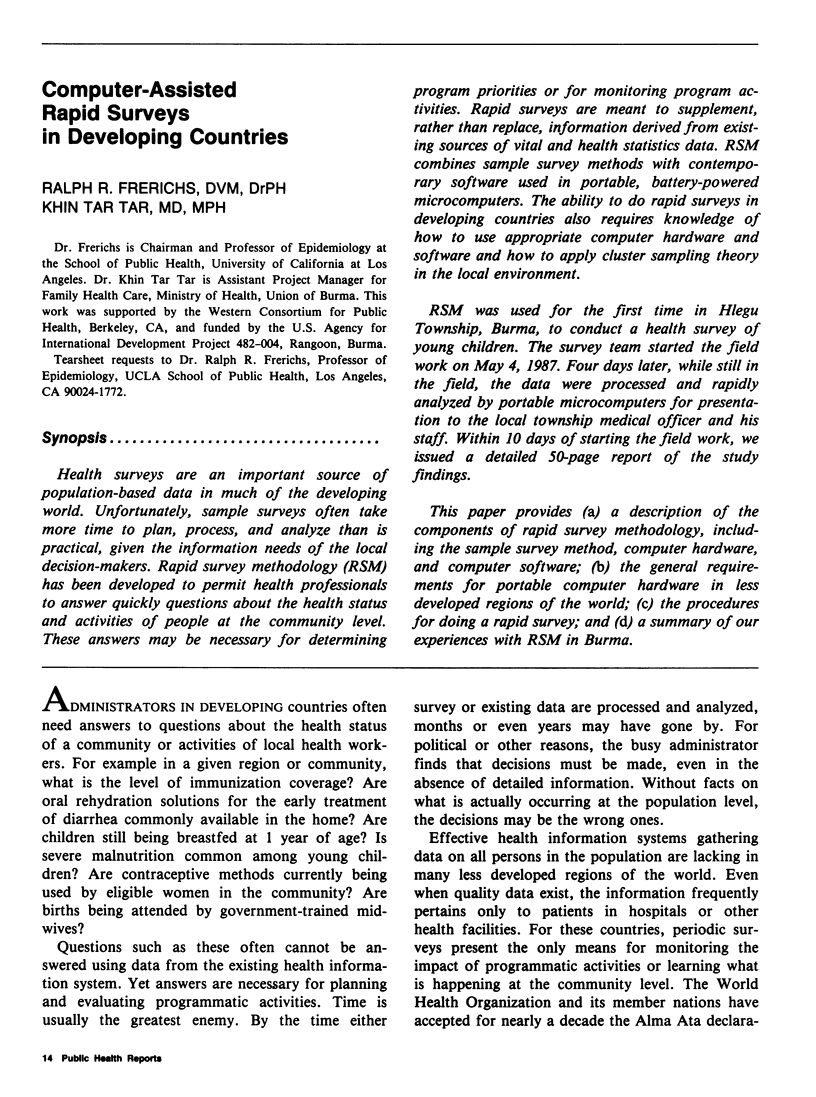
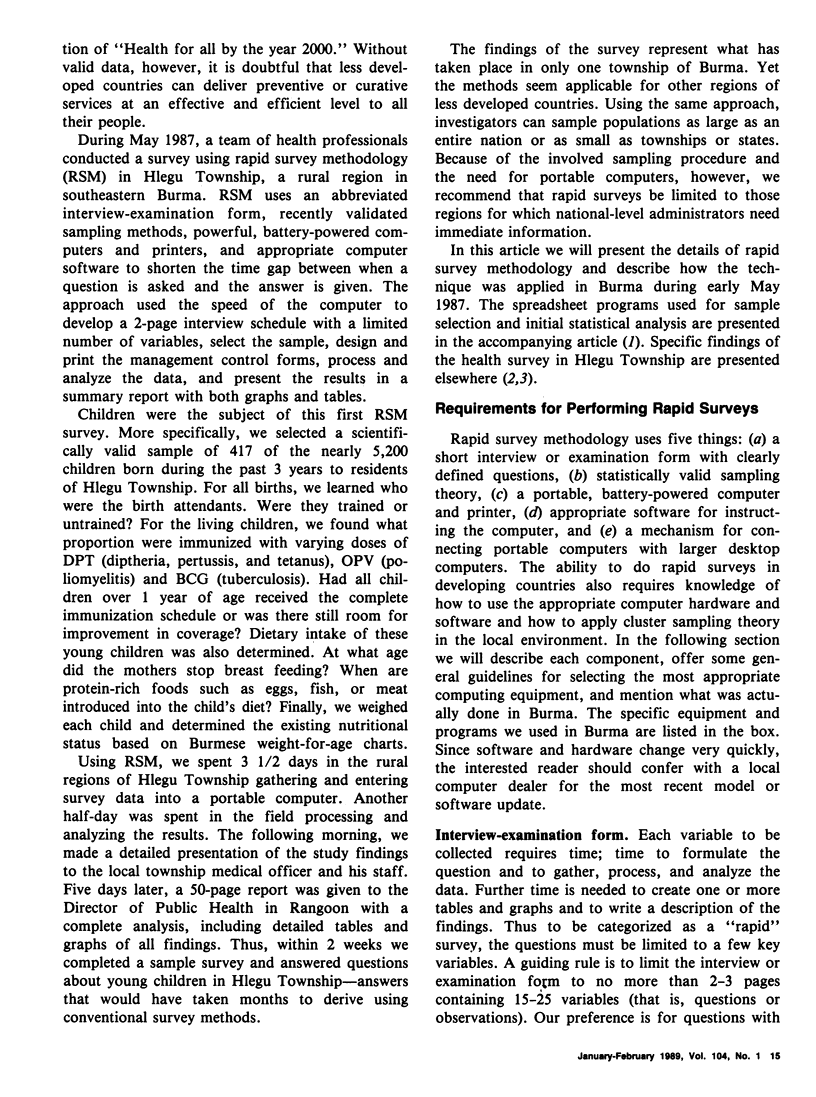
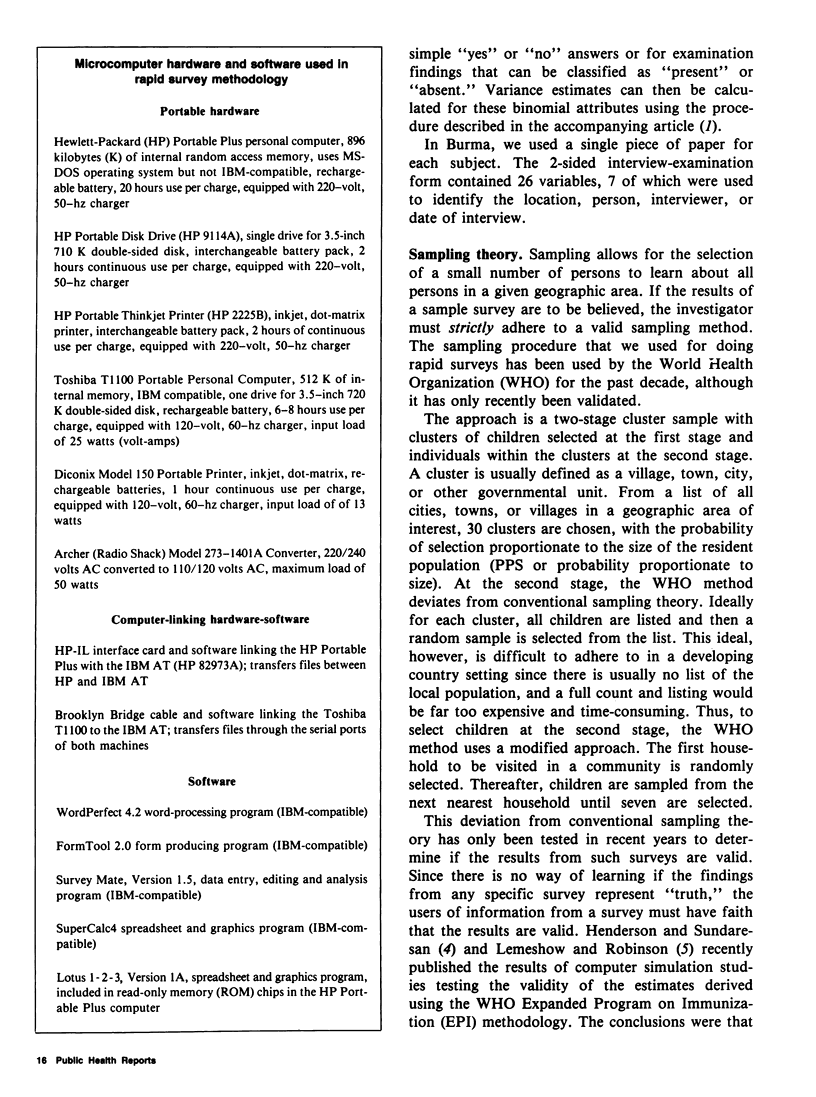
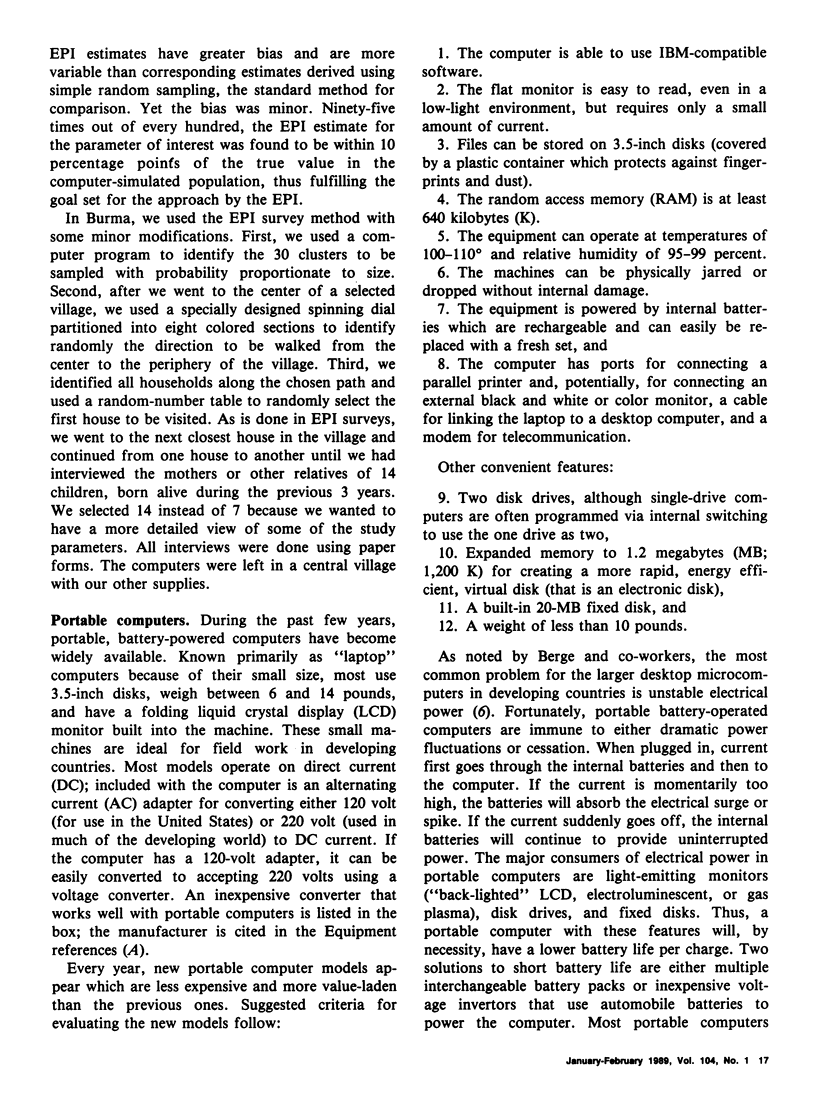
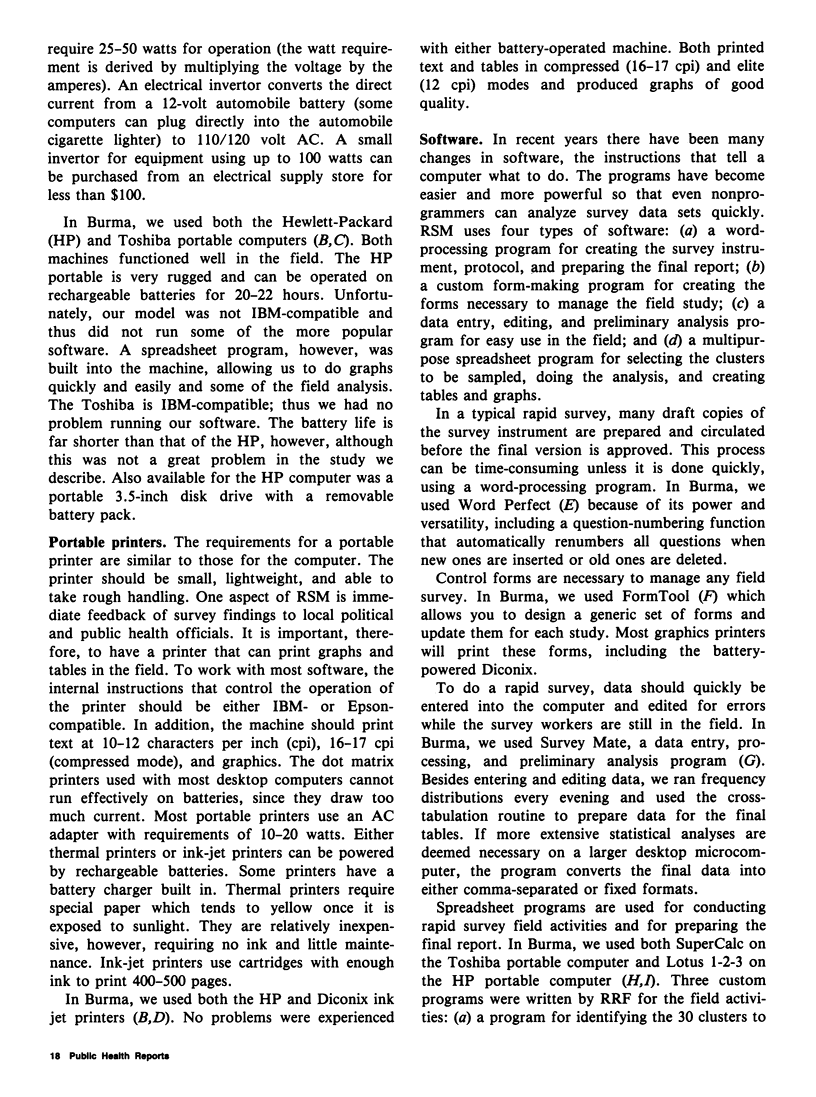
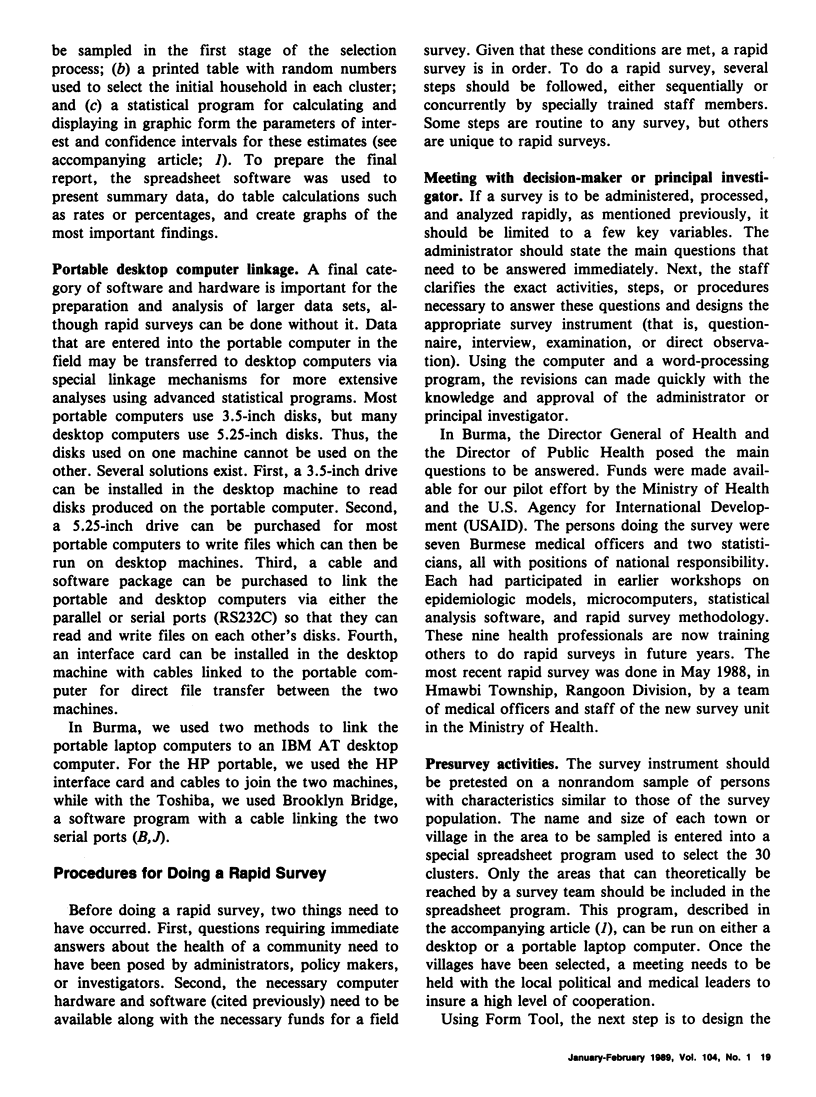
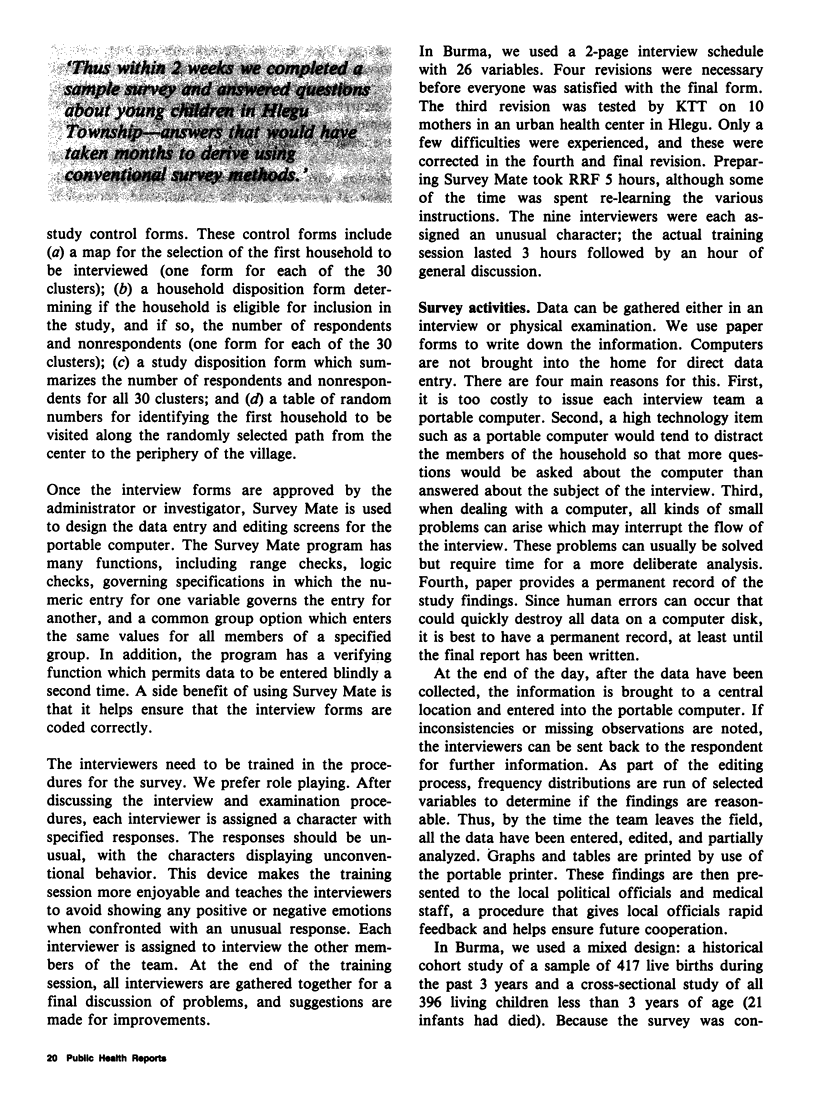
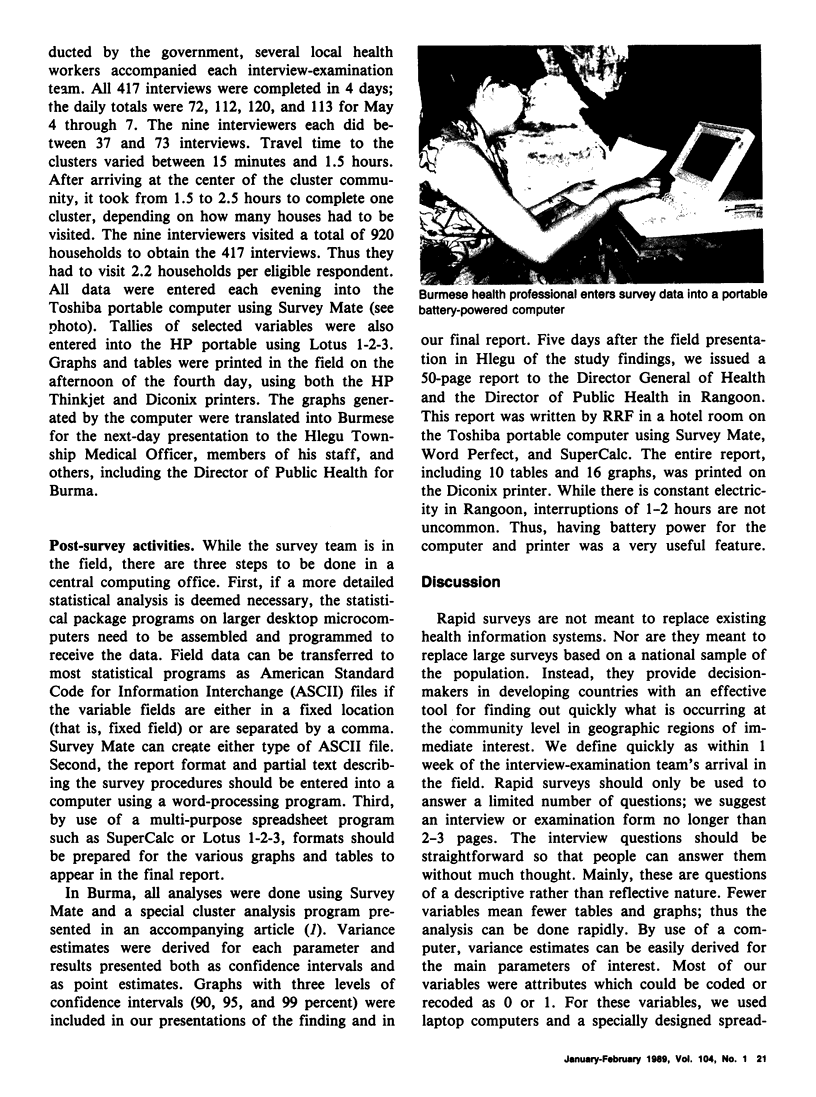
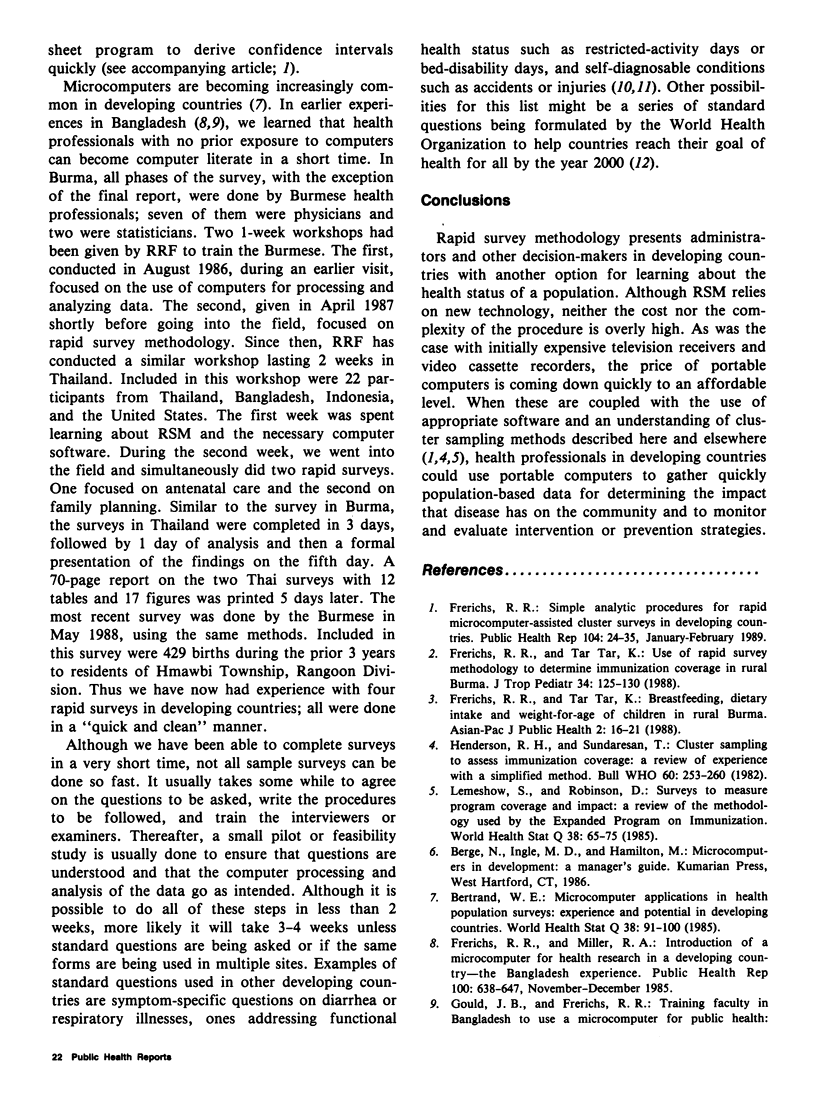
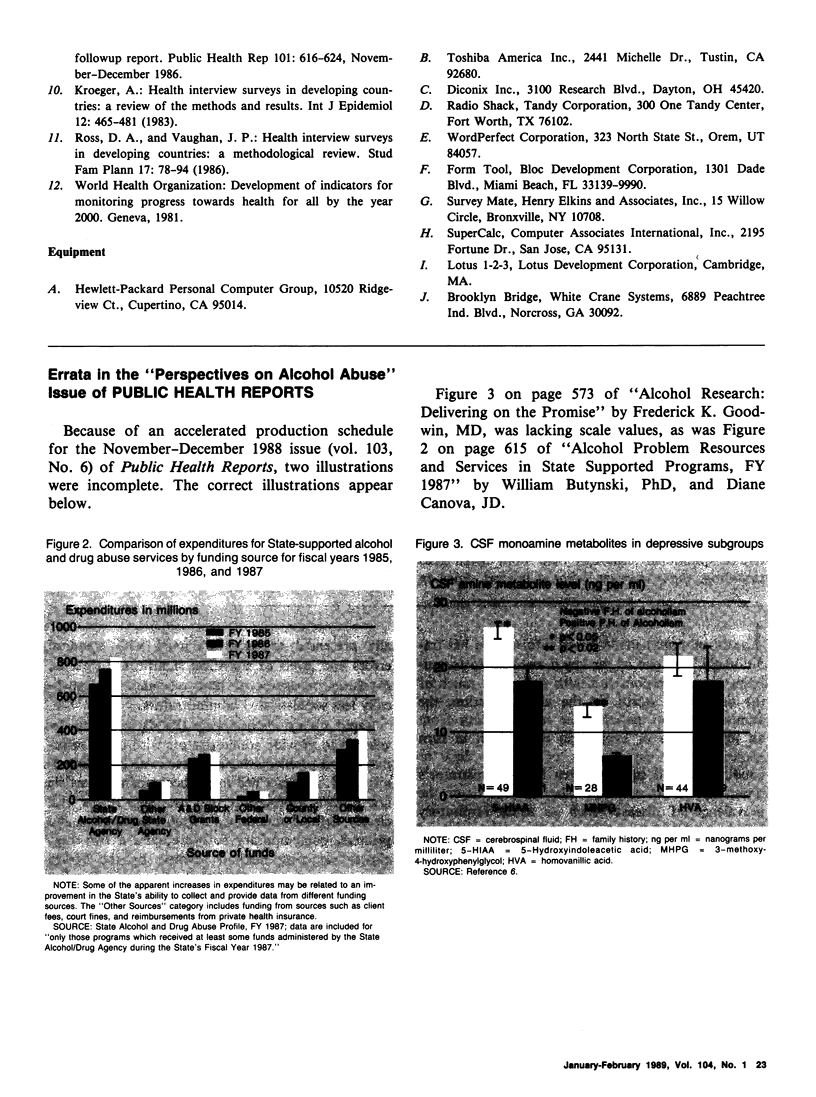
Images in this article
Selected References
These references are in PubMed. This may not be the complete list of references from this article.
- Bertrand W. E. Microcomputer applications in health population surveys: experience and potential in developing countries. World Health Stat Q. 1985;38(1):91–100. [PubMed] [Google Scholar]
- Frerichs R. R., Miller R. A. Introduction of a microcomputer for health research in a developing country--the Bangladesh experience. Public Health Rep. 1985 Nov-Dec;100(6):638–647. [PMC free article] [PubMed] [Google Scholar]
- Frerichs R. R. Simple analytic procedures for rapid microcomputer-assisted cluster surveys in developing countries. Public Health Rep. 1989 Jan-Feb;104(1):24–35. [PMC free article] [PubMed] [Google Scholar]
- Frerichs R. R., Tar Tar K. Use of rapid survey methodology to determine immunization coverage in rural Burma. J Trop Pediatr. 1988 Jun;34(3):125–130. doi: 10.1093/tropej/34.3.125. [DOI] [PubMed] [Google Scholar]
- Frerichs R. R., Tar K. T. Breast-feeding, dietary intake and weight-for-age of children in rural Burma. Asia Pac J Public Health. 1988;2(1):16–21. [PubMed] [Google Scholar]
- Henderson R. H., Sundaresan T. Cluster sampling to assess immunization coverage: a review of experience with a simplified sampling method. Bull World Health Organ. 1982;60(2):253–260. [PMC free article] [PubMed] [Google Scholar]
- Kroeger A. Health interview surveys in developing countries: a review of the methods and results. Int J Epidemiol. 1983 Dec;12(4):465–481. doi: 10.1093/ije/12.4.465. [DOI] [PubMed] [Google Scholar]
- Lemeshow S., Robinson D. Surveys to measure programme coverage and impact: a review of the methodology used by the expanded programme on immunization. World Health Stat Q. 1985;38(1):65–75. [PubMed] [Google Scholar]
- Ross D. A., Vaughan J. P. Health interview surveys in developing countries: a methodological review. Stud Fam Plann. 1986 Mar-Apr;17(2):78–94. [PubMed] [Google Scholar]



